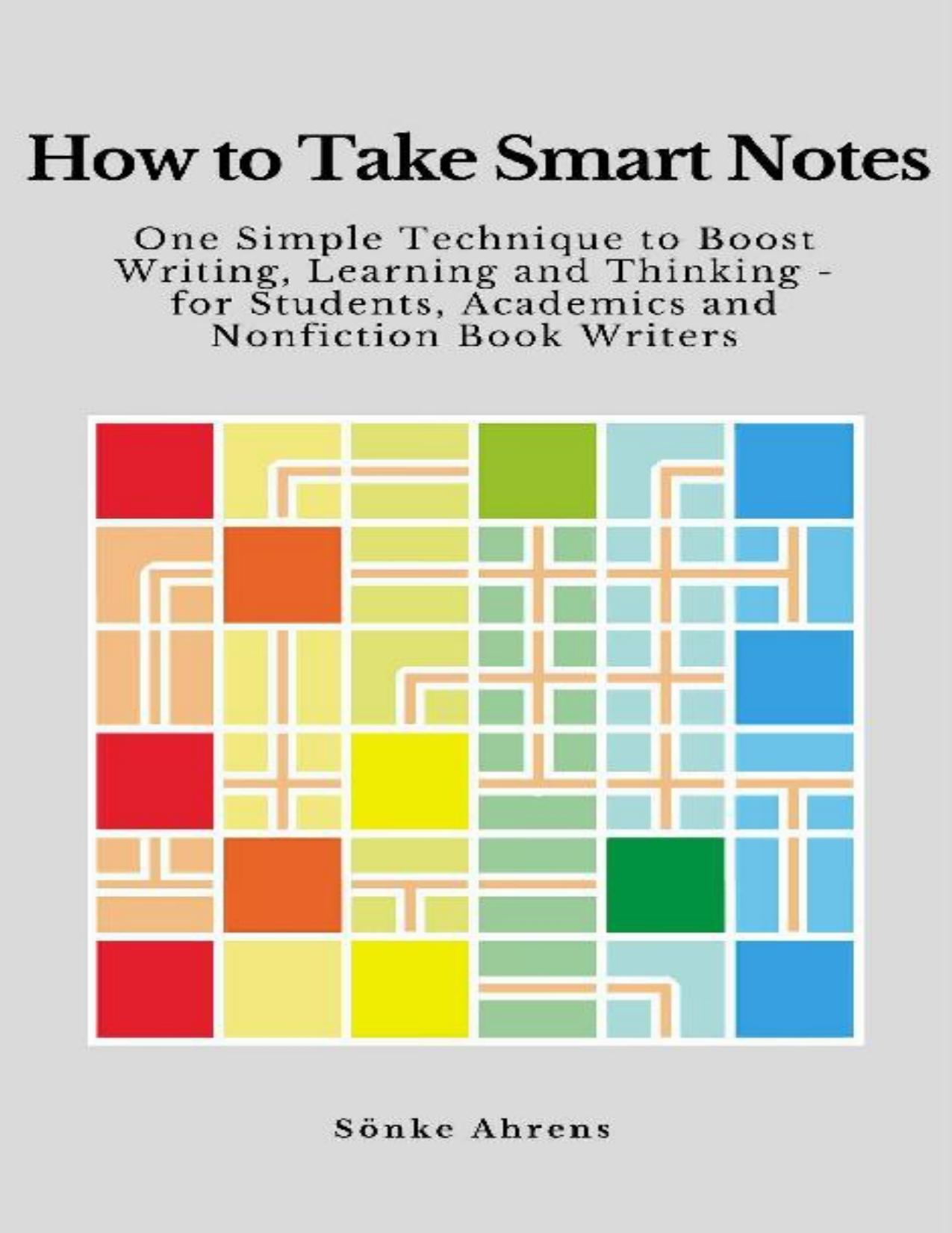How to Take Smart Notes: One Simple Technique to Boost Writing, Learning and Thinking â for Students, Academics and Nonfiction Book Writers by Sönke Ahrens

Author:Sönke Ahrens [Ahrens, Sönke]
Language: eng
Format: epub, pdf
Publisher: UNKNOWN
Published: 2017-02-20T18:30:00+00:00
10.4 Learn to Read
âIf you canât say it clearly, you donât understand it yourself.â (John Searle)
Physicist and Nobel Prize winner Richard Feynman once said that he could only determine whether he understood something if he could give an introductory lecture on it. Reading with a pen in your hand is the small-scale equivalent of a lecture. Permanent notes, too, are directed towards an audience ignorant of the thoughts behind the text and unaware of the original context, only equipped with a general knowledge of the field. The only difference is that the audience here consists of our future selves, which will very soon have reached the same state of ignorance as someone who never had access to what we have written about. Of course, it would be helpful to involve other people at all stages of the writing process, because then we can see in their faces how well we have put something or how convincing our arguments are, but that is rather impractical.
Also, we shouldnât underestimate the advantages of writing. In oral presentations, we easily get away with unfounded claims. We can distract from argumentative gaps with confident gestures or drop a casual âyou know what I meanâ irrespective of whether we know what we meant. In writing, these manoeuvres are a little too obvious. It is easy to check a statement like: âBut that is what I said!â The most important advantage of writing is that it helps us to confront ourselves when we do not understand something as well as we would like to believe.
âThe principle is that you must not fool yourself, and you are the easiest person to fool,â Feynman stressed in a speech to young scientists (Feynman 1985, 342). Reading, especially rereading, can easily fool us into believing we understand a text. Rereading is especially dangerous because of the mere-exposure effect: The moment we become familiar with something, we start believing we also understand it. On top of that, we also tend to like it more (Bornstein 1989).
While it is obvious that familiarity is not understanding, we have no chance of knowing whether we understand something or just believe we understand something until we test ourselves in some form. If we donât try to verify our understanding during our studies, we will happily enjoy the feeling of getting smarter and more knowledgeable while in reality staying as dumb as we were. This warm feeling disappears quickly when we try to explain what we read in our own words in writing. Suddenly, we see the problem. The attempt to rephrase an argument in our own words confronts us without mercy with all the gaps in our understanding. It certainly feels less good, but this struggle is the only chance we have to improve our understanding, to learn and move forward (cf. below). This, again, is deliberate practice. Now we are faced with a clear choice: We have to choose between feeling smarter or becoming smarter. And while writing down an idea feels like a detour,
Download
How to Take Smart Notes: One Simple Technique to Boost Writing, Learning and Thinking â for Students, Academics and Nonfiction Book Writers by Sönke Ahrens.pdf
This site does not store any files on its server. We only index and link to content provided by other sites. Please contact the content providers to delete copyright contents if any and email us, we'll remove relevant links or contents immediately.
The Art of Coaching Workbook by Elena Aguilar(48032)
Trainspotting by Irvine Welsh(20042)
Twilight of the Idols With the Antichrist and Ecce Homo by Friedrich Nietzsche(17702)
Fangirl by Rainbow Rowell(7825)
Periodization Training for Sports by Tudor Bompa(7323)
Change Your Questions, Change Your Life by Marilee Adams(6635)
This Is How You Lose Her by Junot Diaz(5753)
Grit by Angela Duckworth(4728)
Red Sparrow by Jason Matthews(4654)
Asking the Right Questions: A Guide to Critical Thinking by M. Neil Browne & Stuart M. Keeley(4564)
Paper Towns by Green John(4163)
Room 212 by Kate Stewart(4099)
Ken Follett - World without end by Ken Follett(3968)
The Sports Rules Book by Human Kinetics(3581)
Housekeeping by Marilynne Robinson(3395)
The Motorcycle Diaries by Ernesto Che Guevara(3325)
Introduction to Kinesiology by Shirl J. Hoffman(3297)
Exercise Technique Manual for Resistance Training by National Strength & Conditioning Association(3285)
Double Down (Diary of a Wimpy Kid Book 11) by Jeff Kinney(3267)
